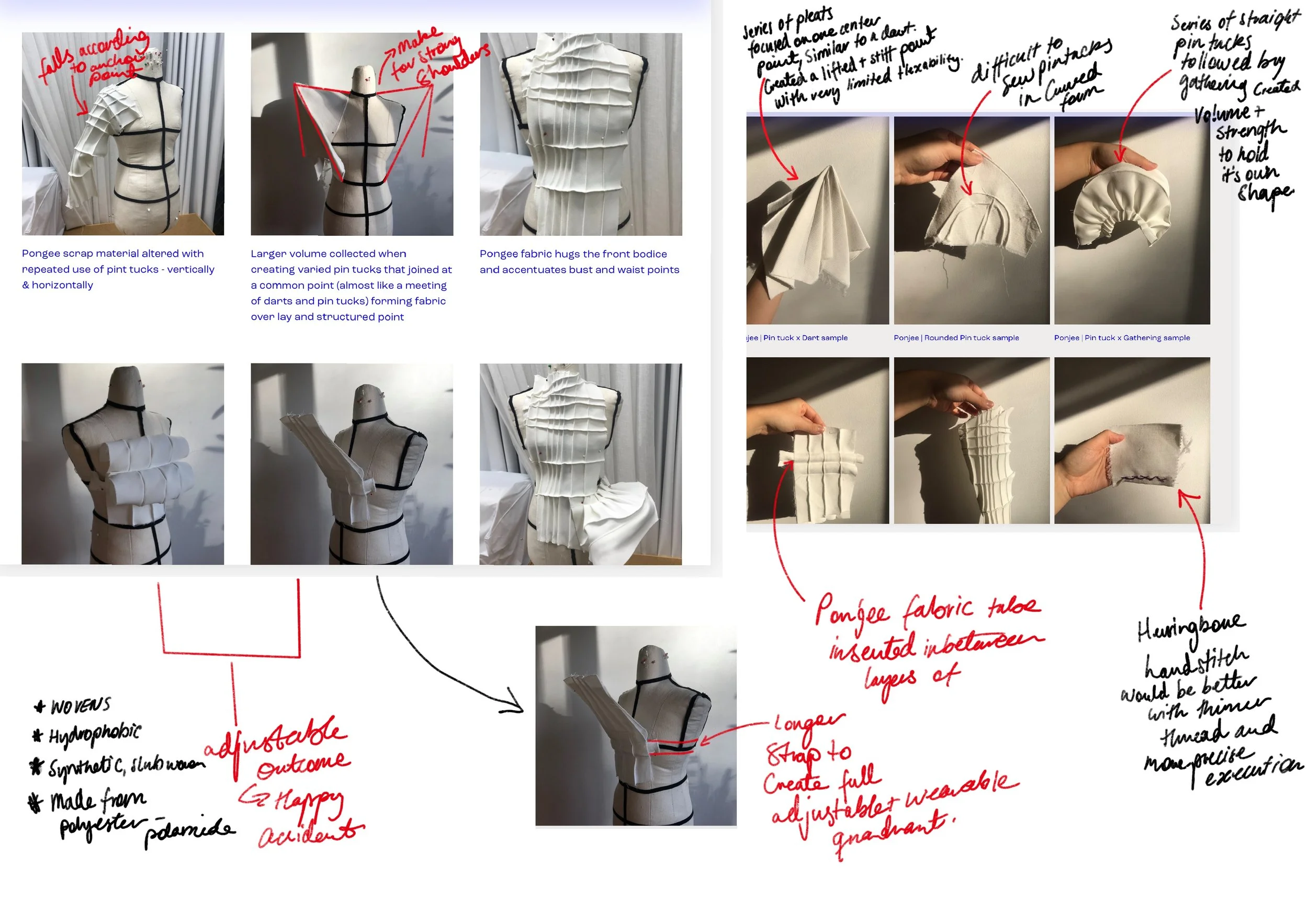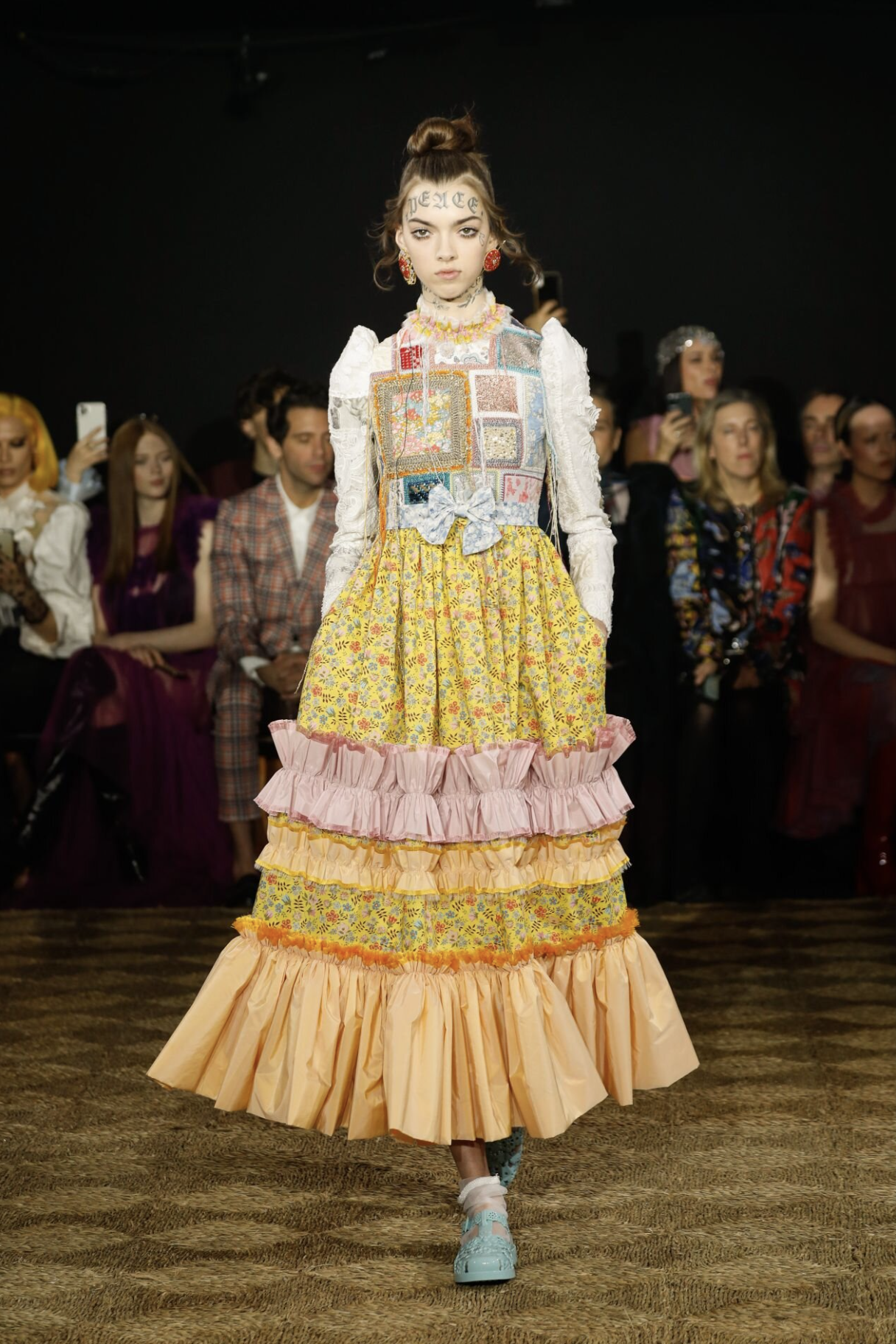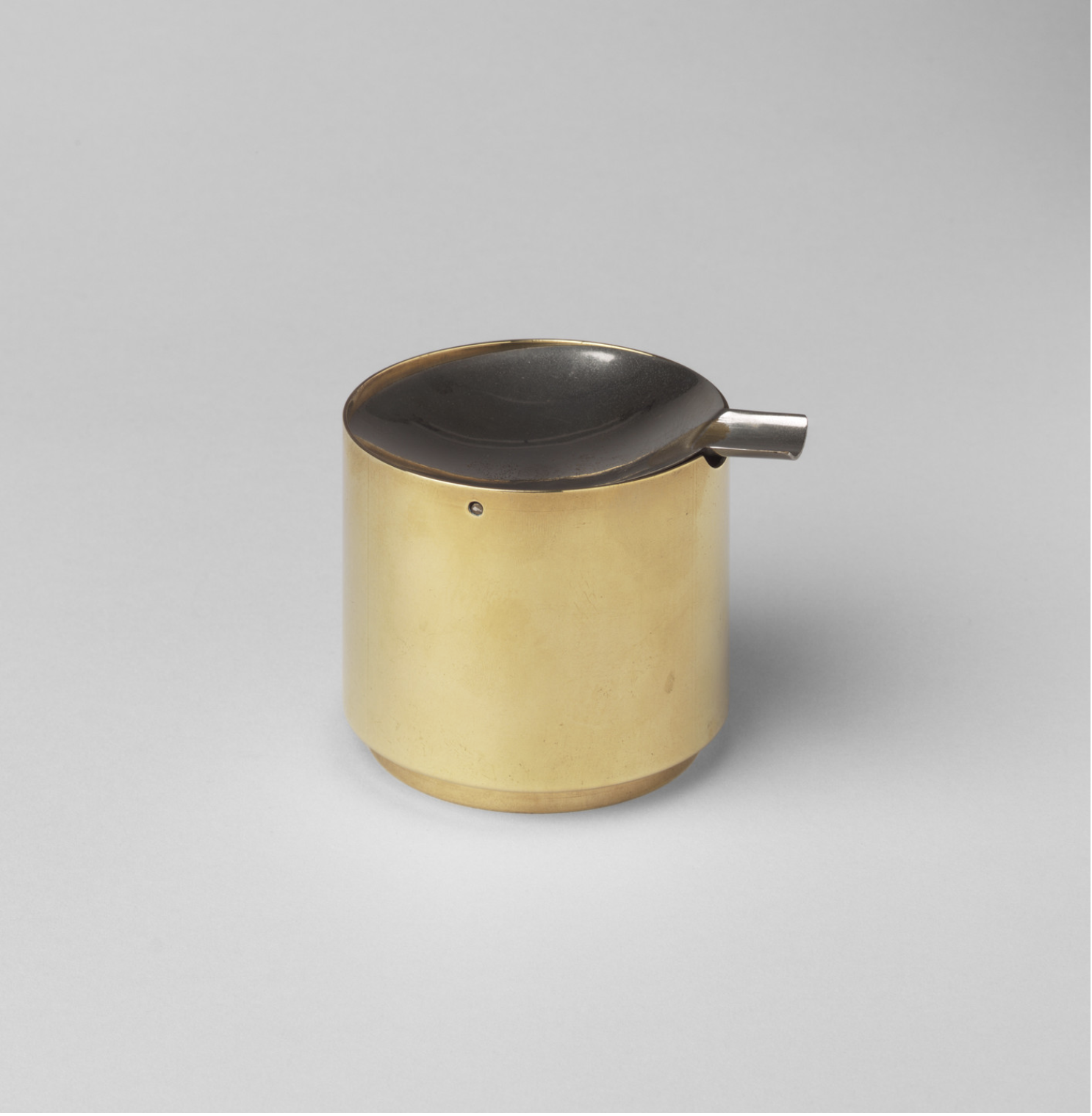Stitching Techniques
Week one: Exploring Pongee scraps, applications on the body and how repetition can enhance and alter the state of the fabric
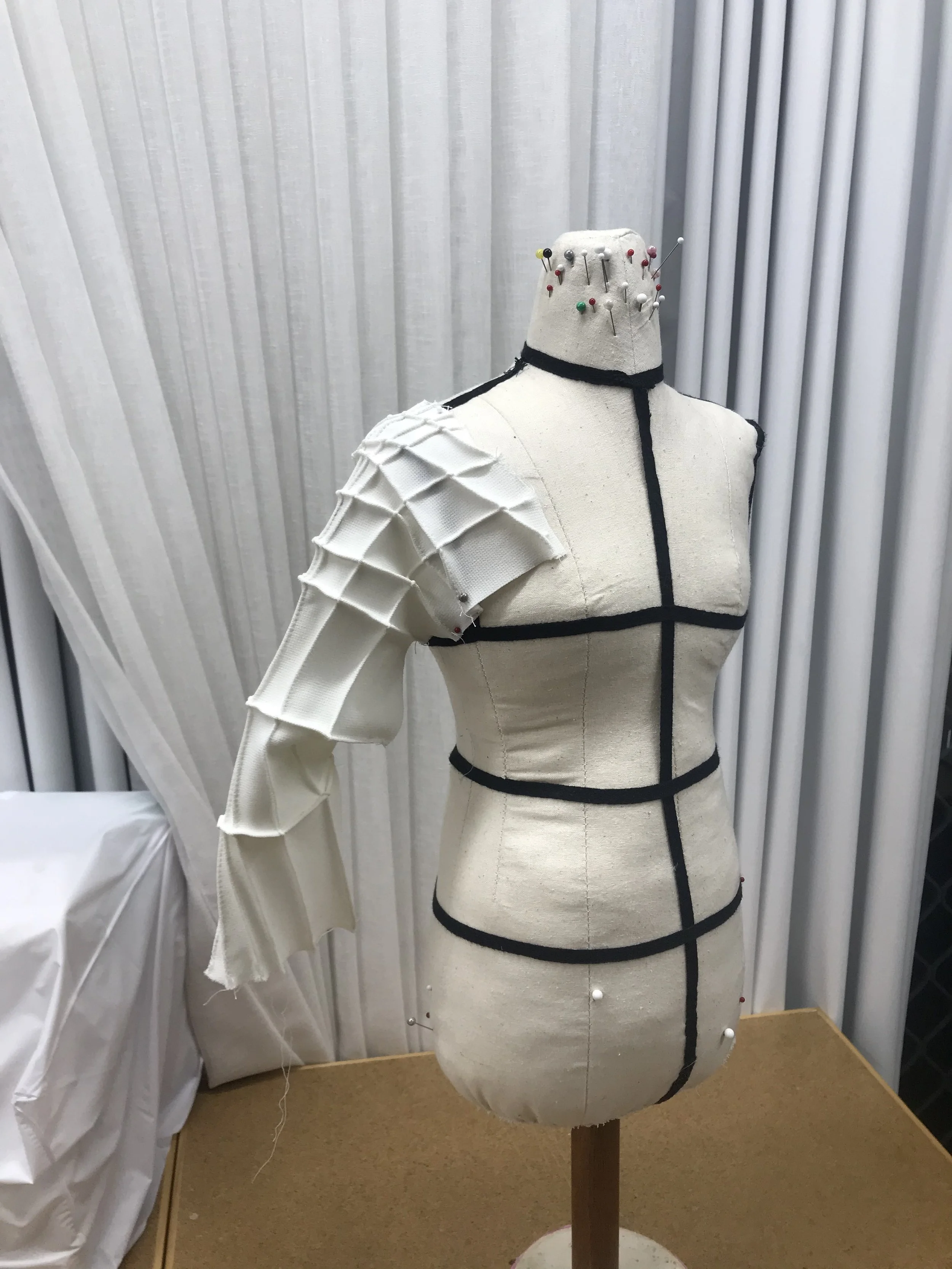
Pongee scrap material altered with repeated use of pint tucks - vertically & horizontally
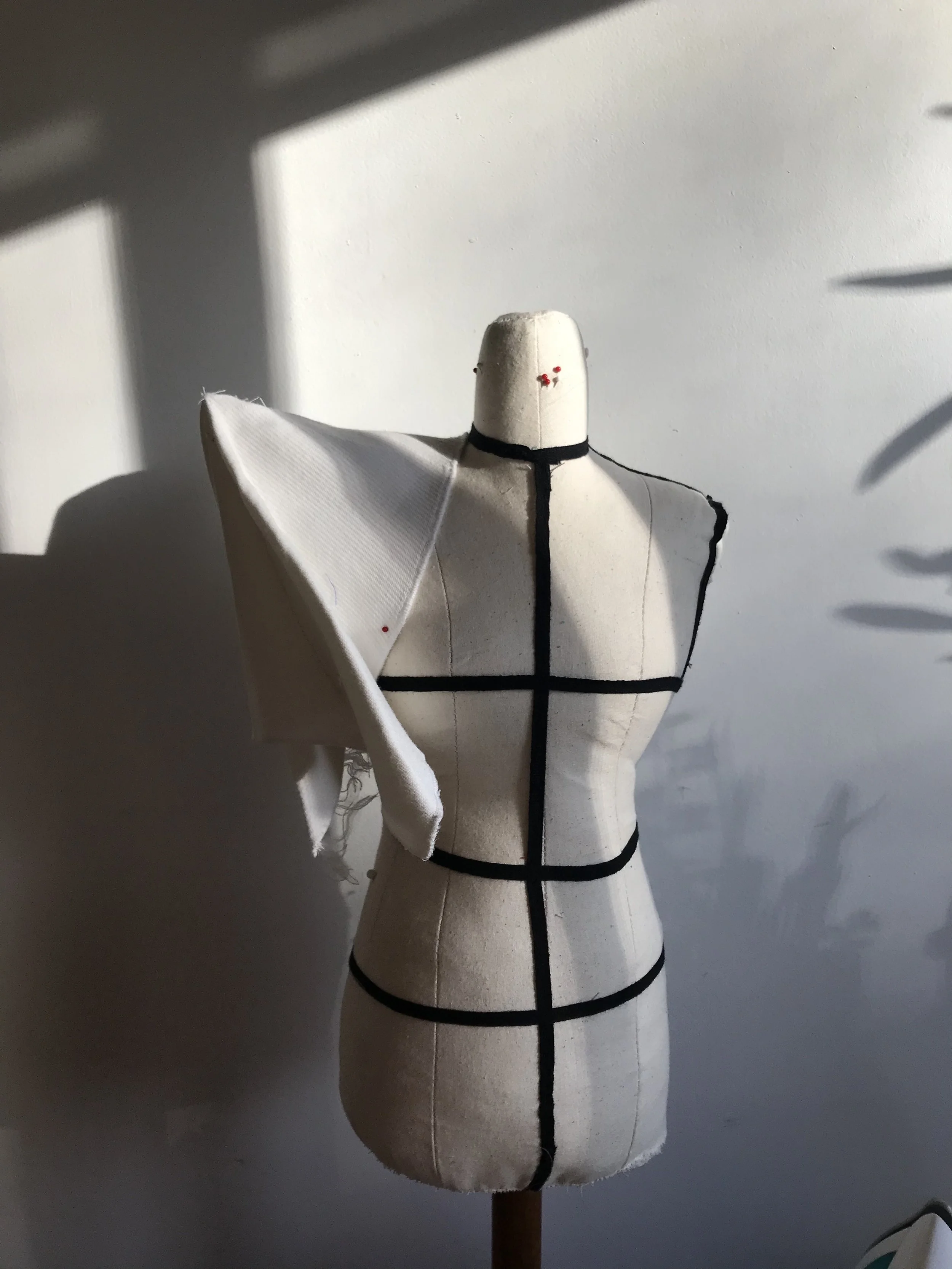
Larger volume collected when creating varied pin tucks that joined at a common point (almost like a meeting of darts and pin tucks) forming fabric over lay and structured point

Pongee fabric hugs the front bodice and accentuates bust and waist points
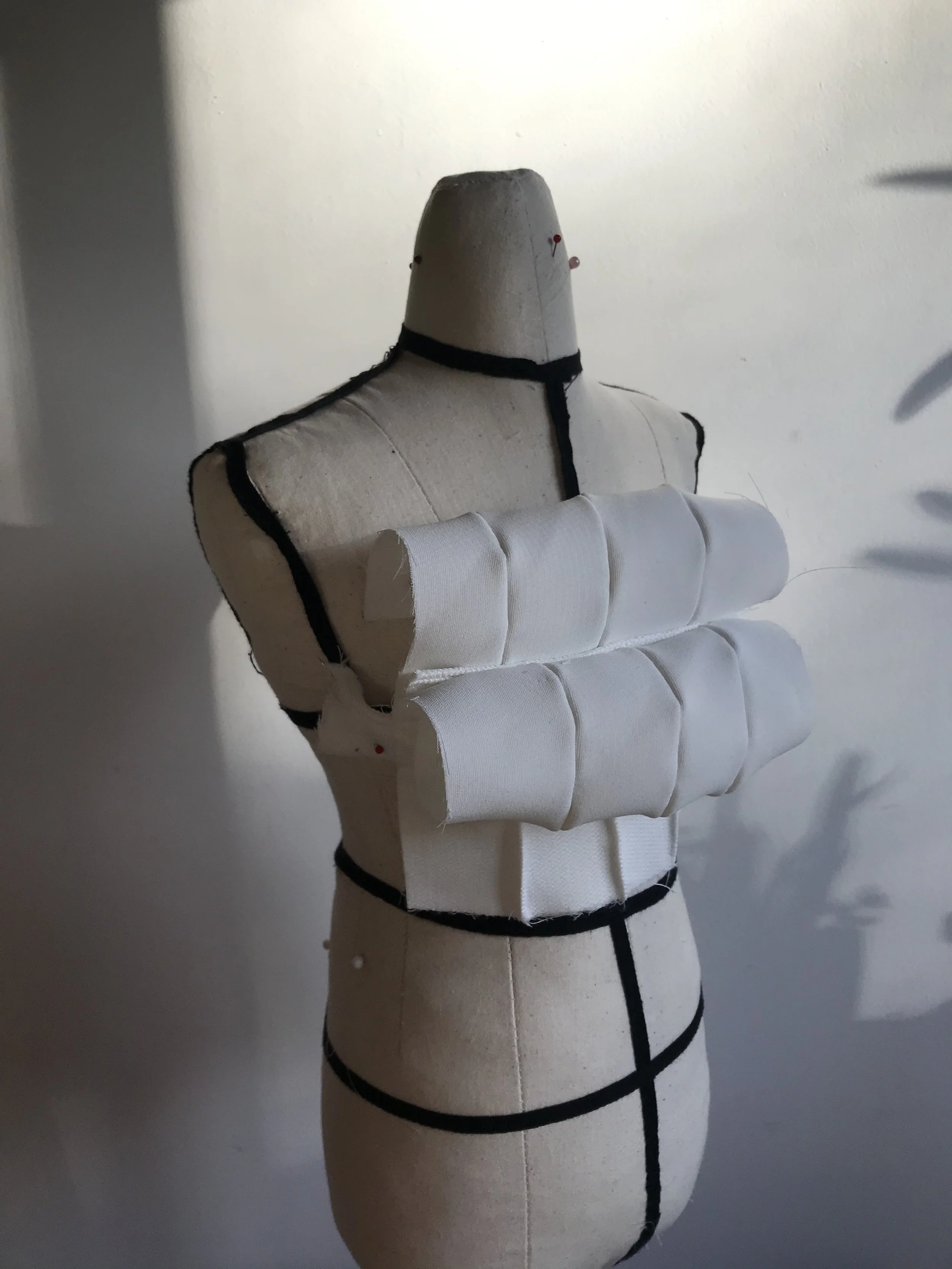
DIY cording made from heavier weight Ponjee fabric, inserted and sewn between two layers of fabric with the bottom left open in order to pin and roll as shown above
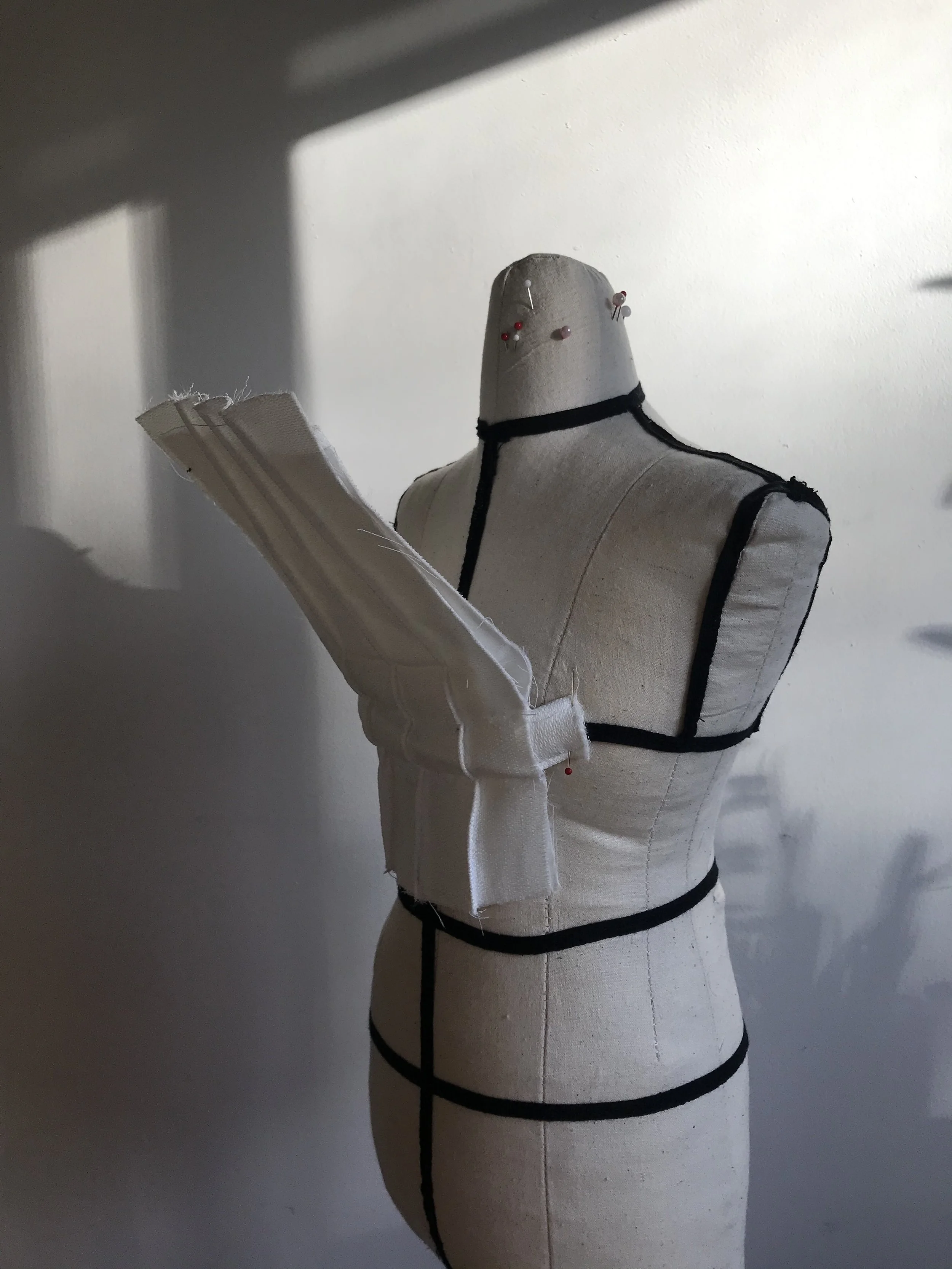
Heavy weight Pongee sample anchored at the bust

Light weight Pongee samples anchored at the shoulders and waist
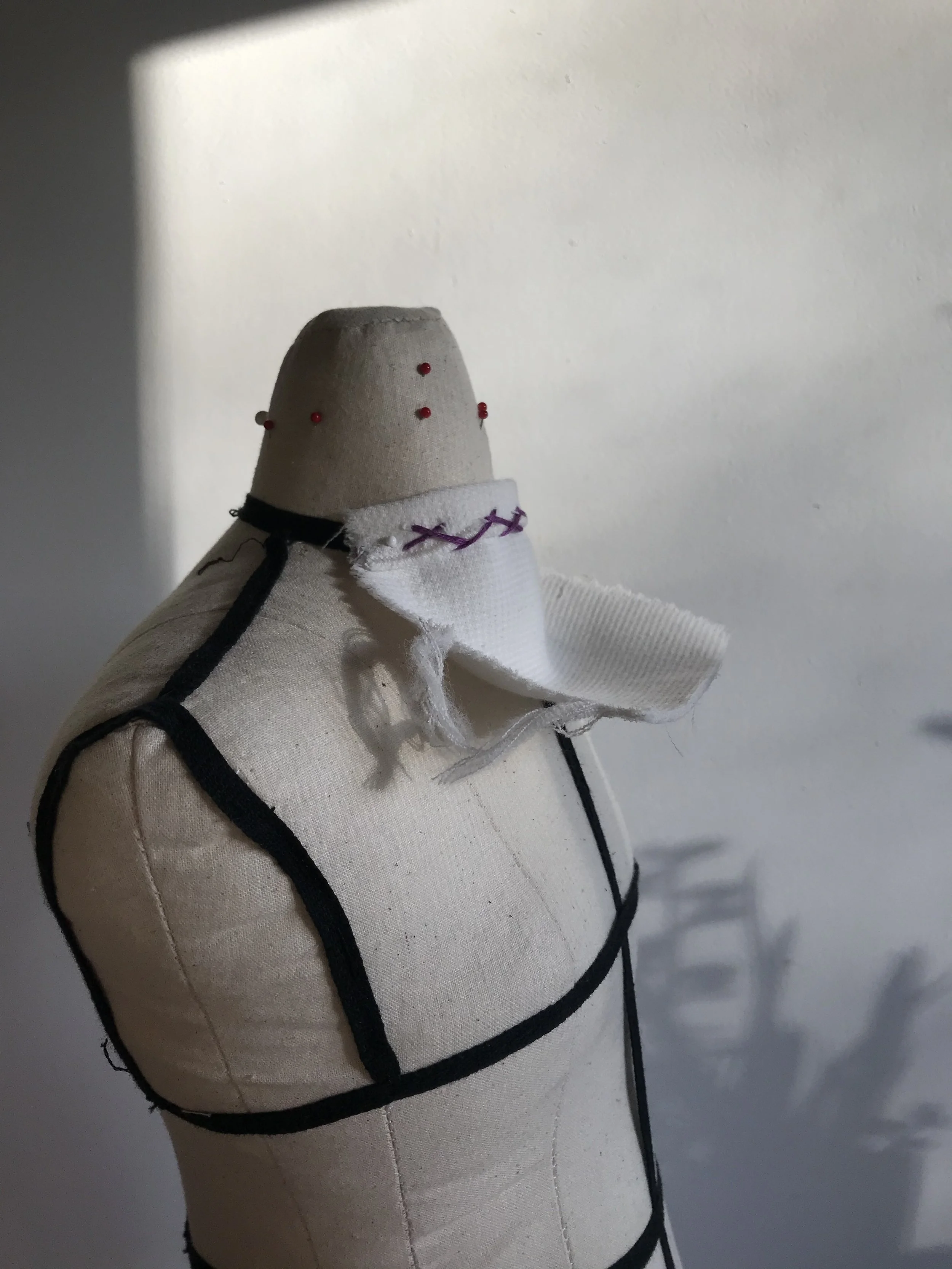
Herringbone stitch sample on heavy weight Ponjee anchored at the neck
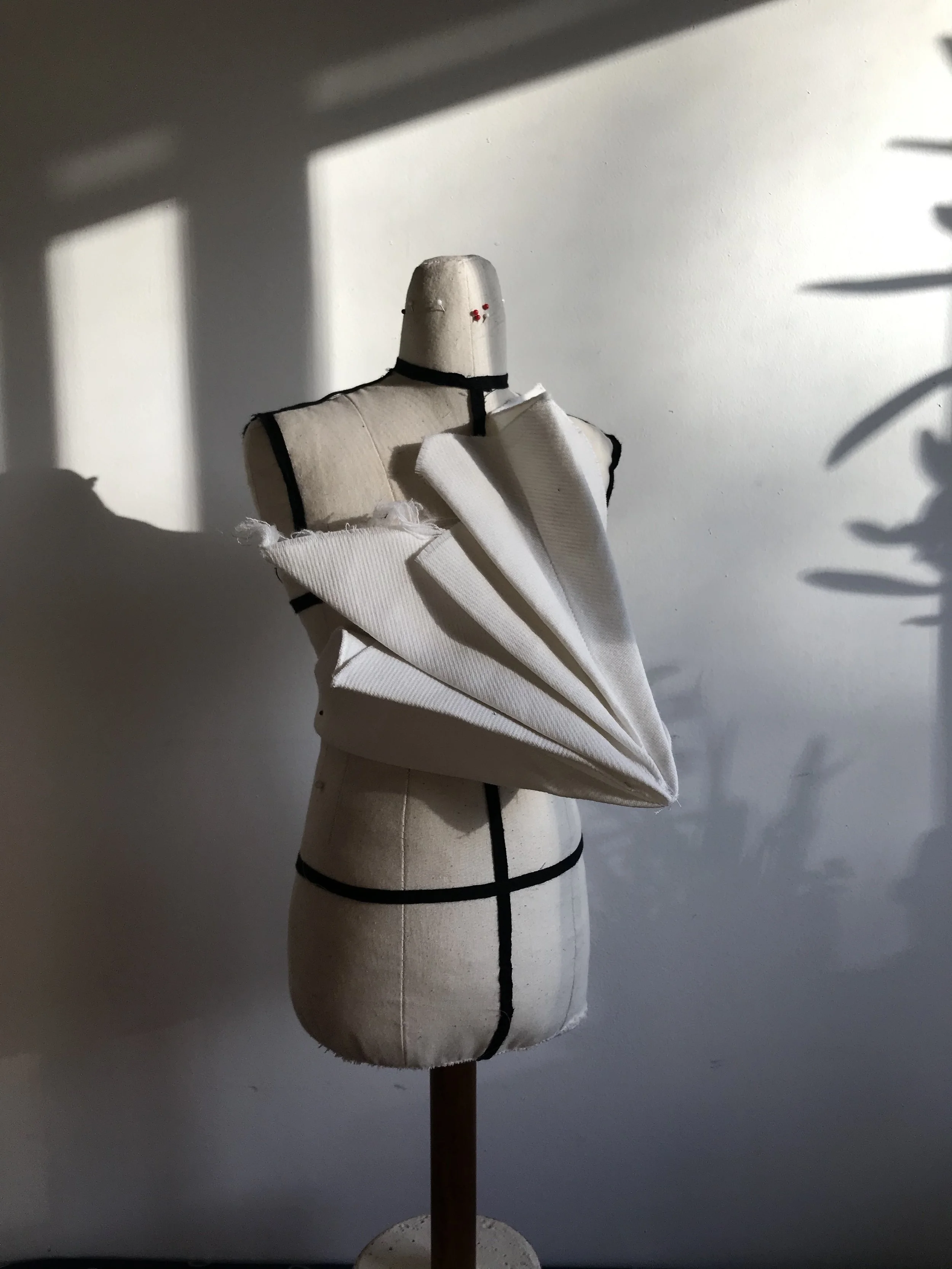
Pongee dart x pin tuck sample anchored on the bust
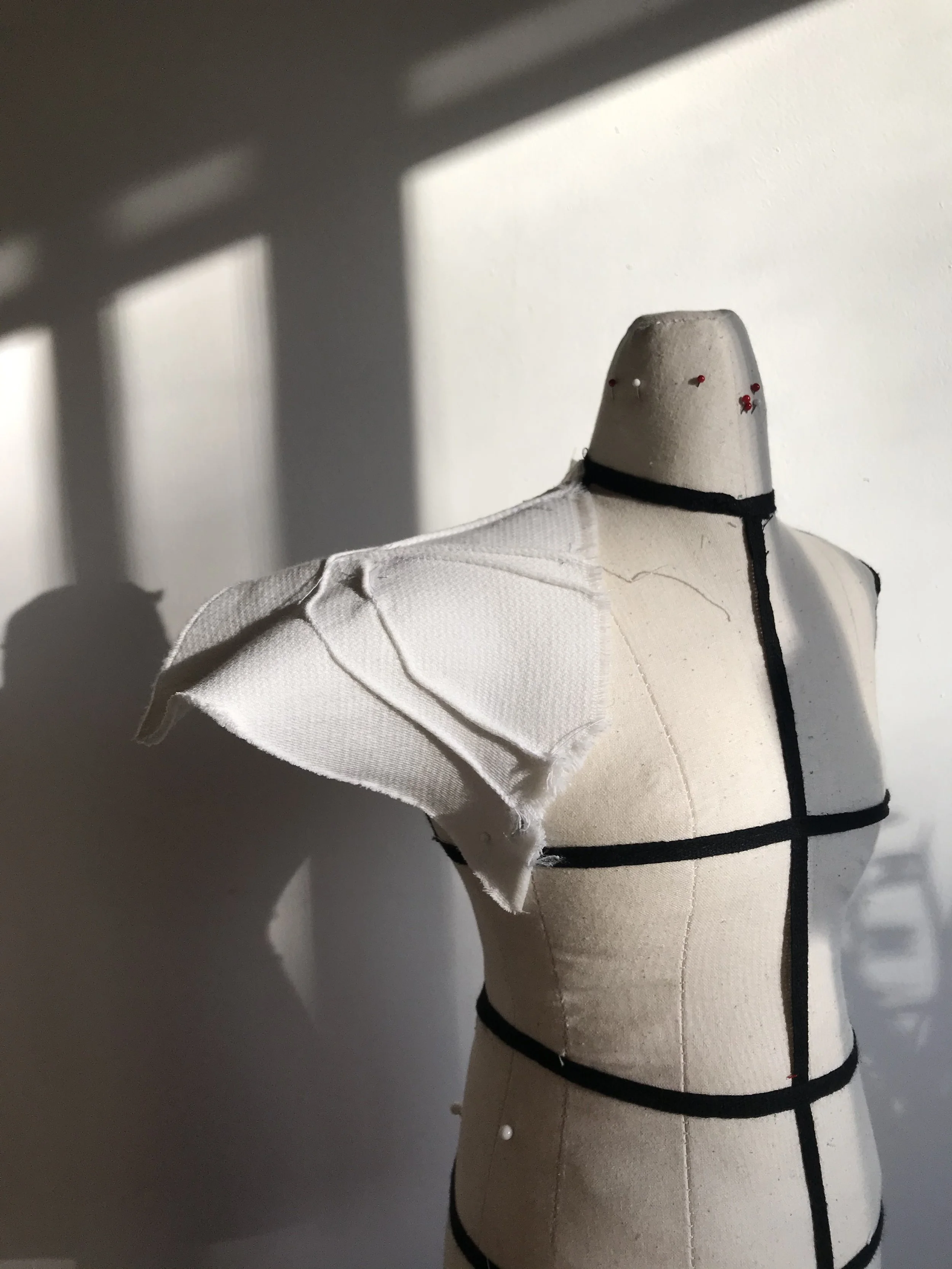
Ponjee rounded pin tuck sample anchored on the shoulder
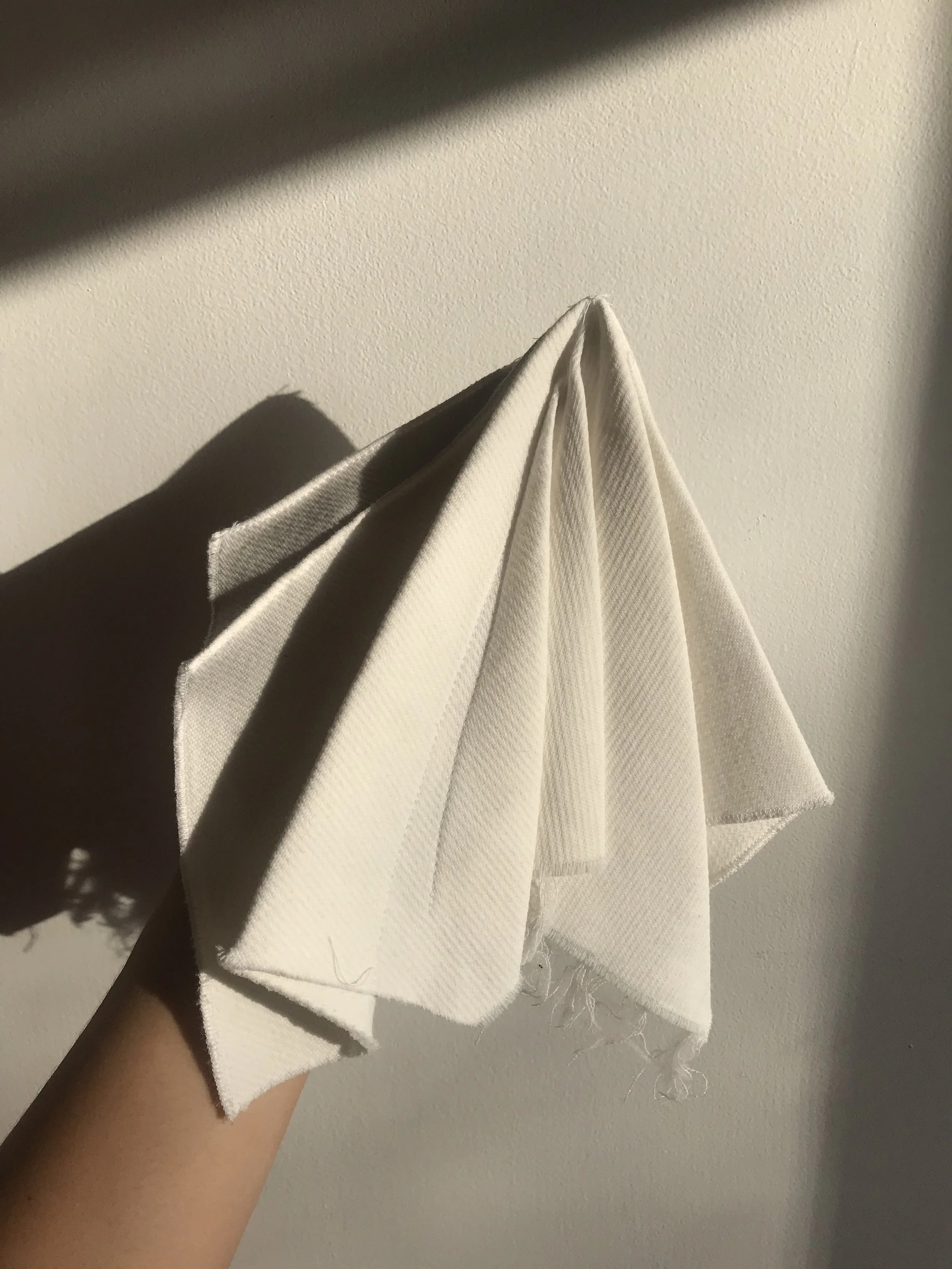
Ponjee | Pin tuck x Dart sample
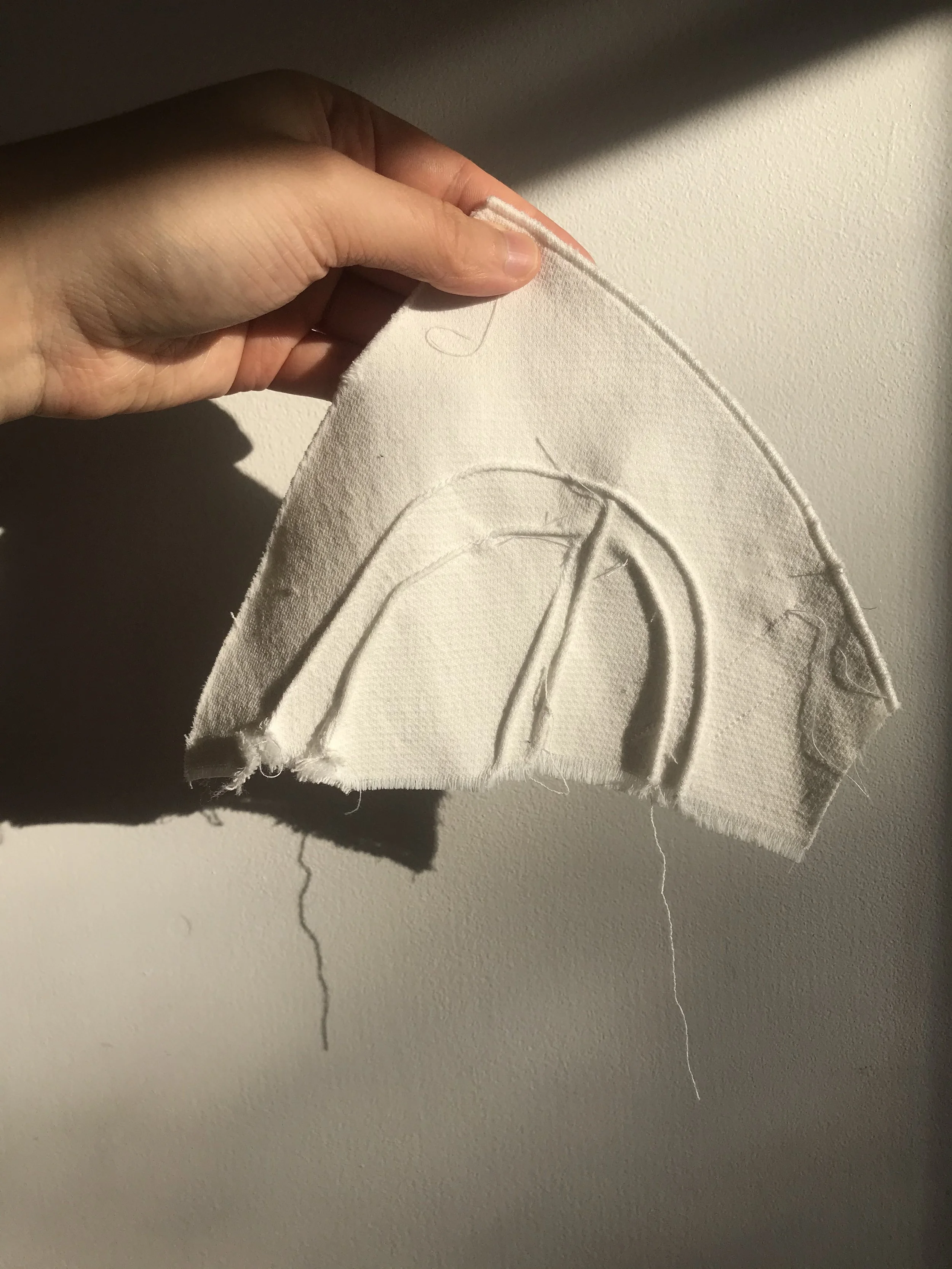
Ponjee | Rounded Pin tuck sample
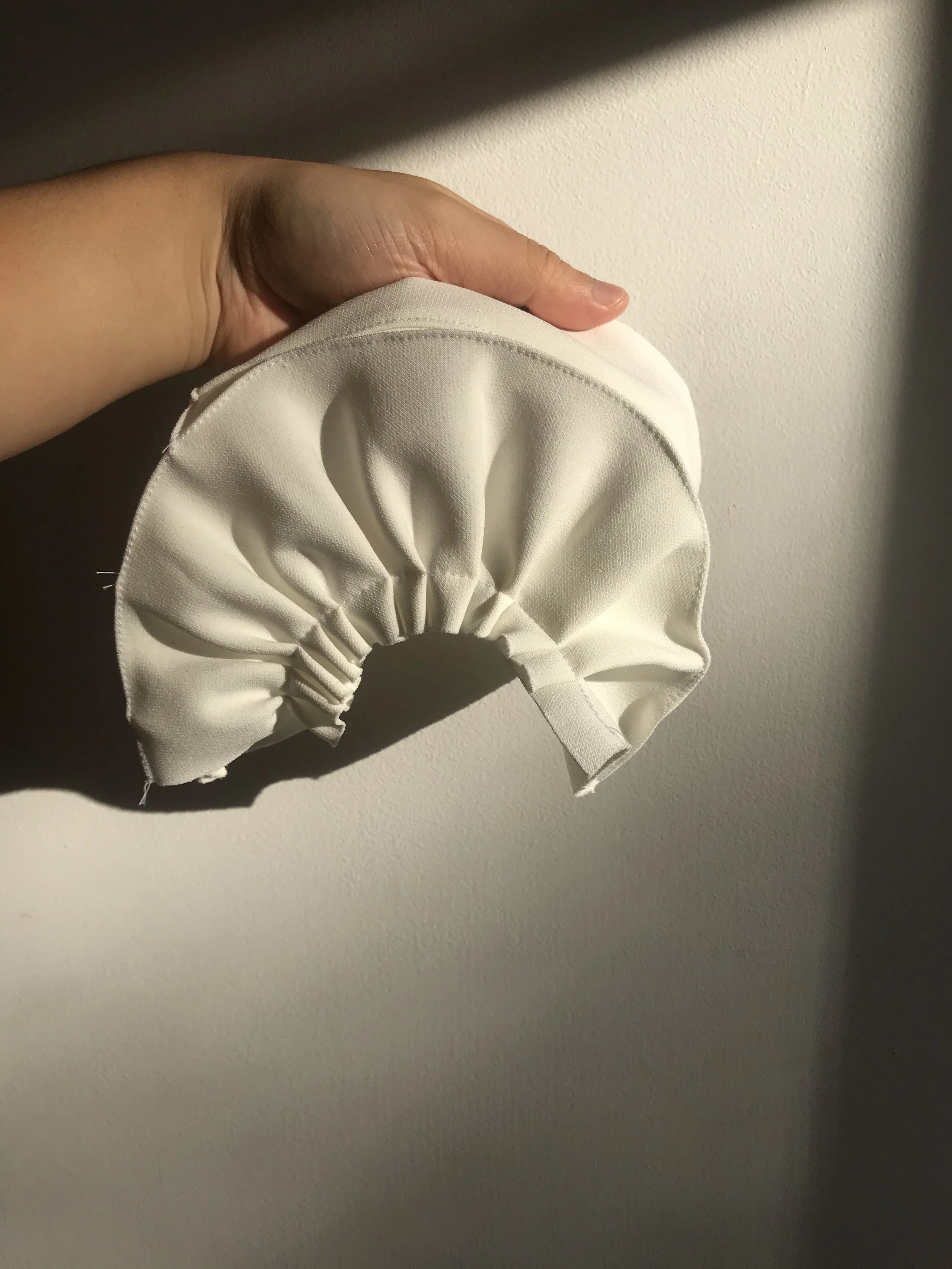
Ponjee | Pin tuck x Gathering sample
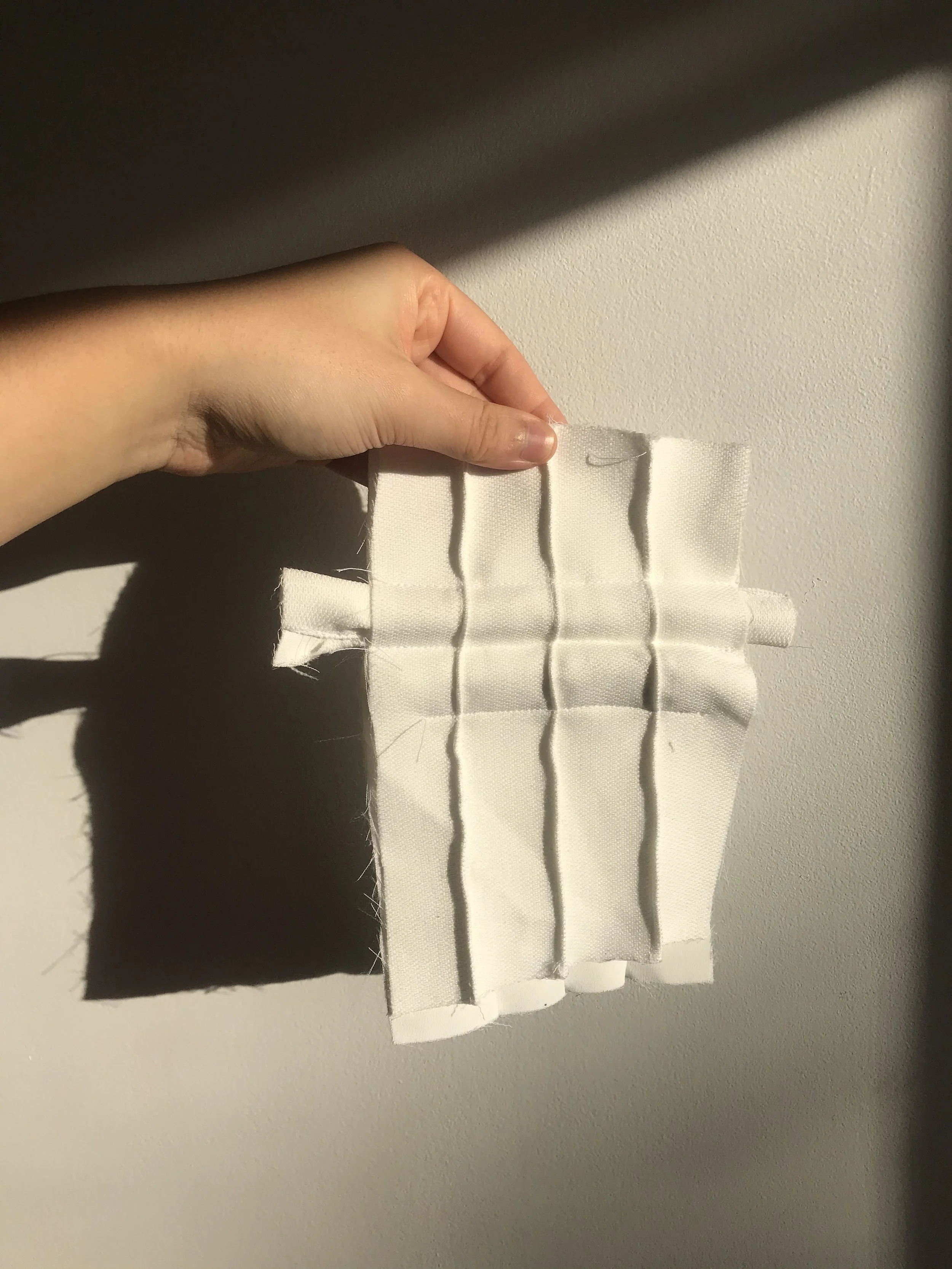
Ponjee | Pin tuck x fabric cording sample
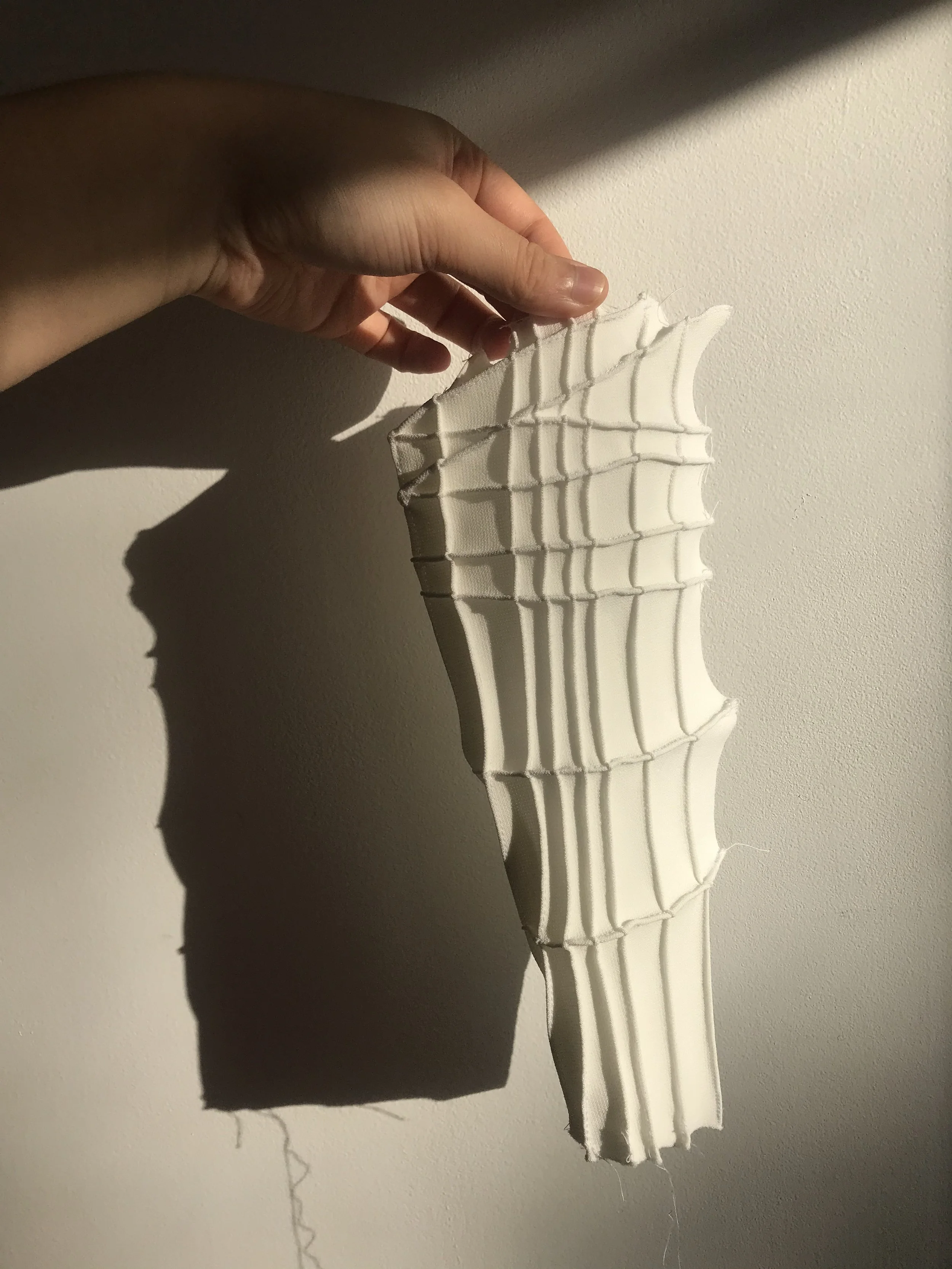
Ponjee | Pin tuck sample
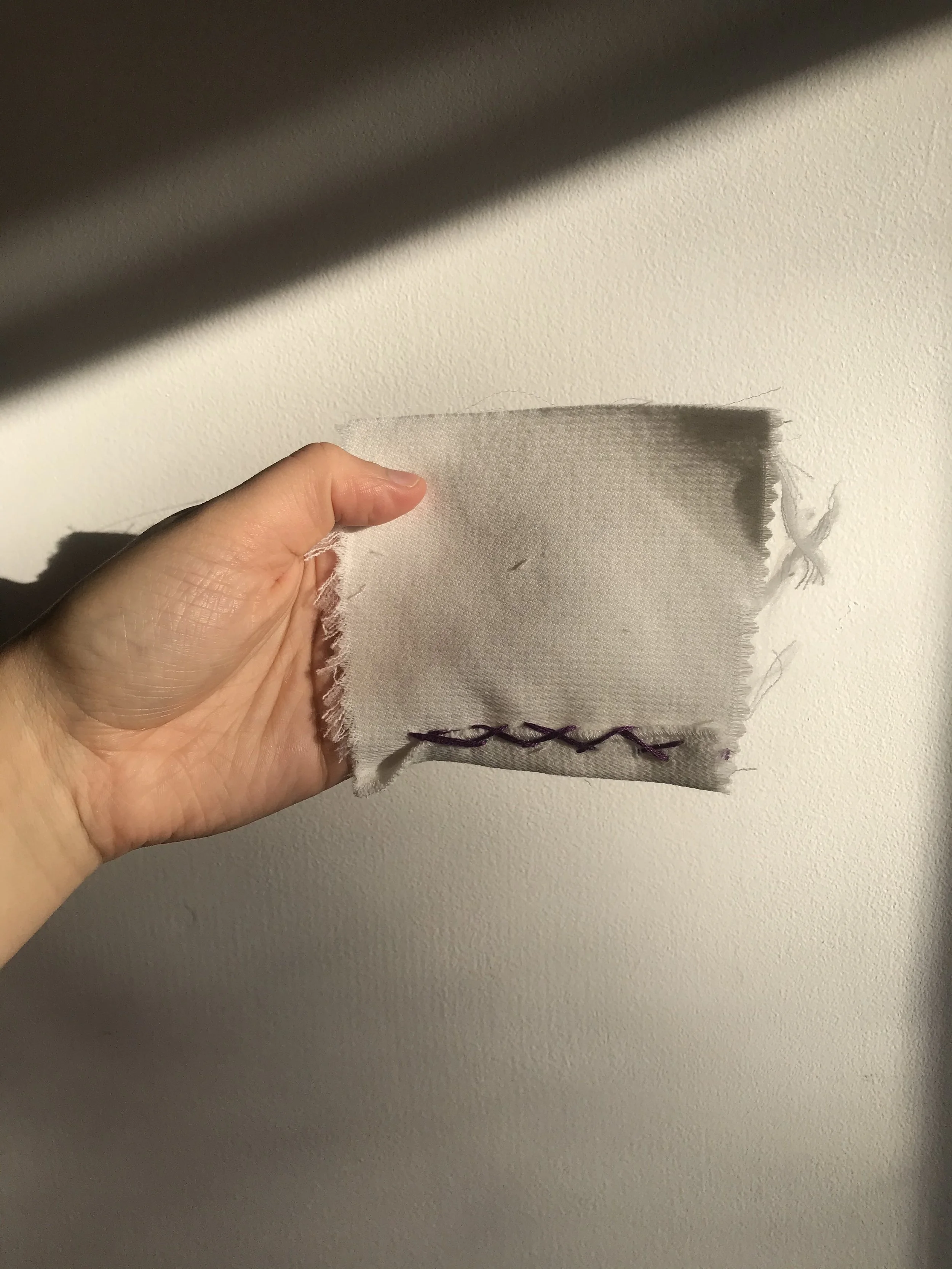
Ponjee | Herring bone stitch sample
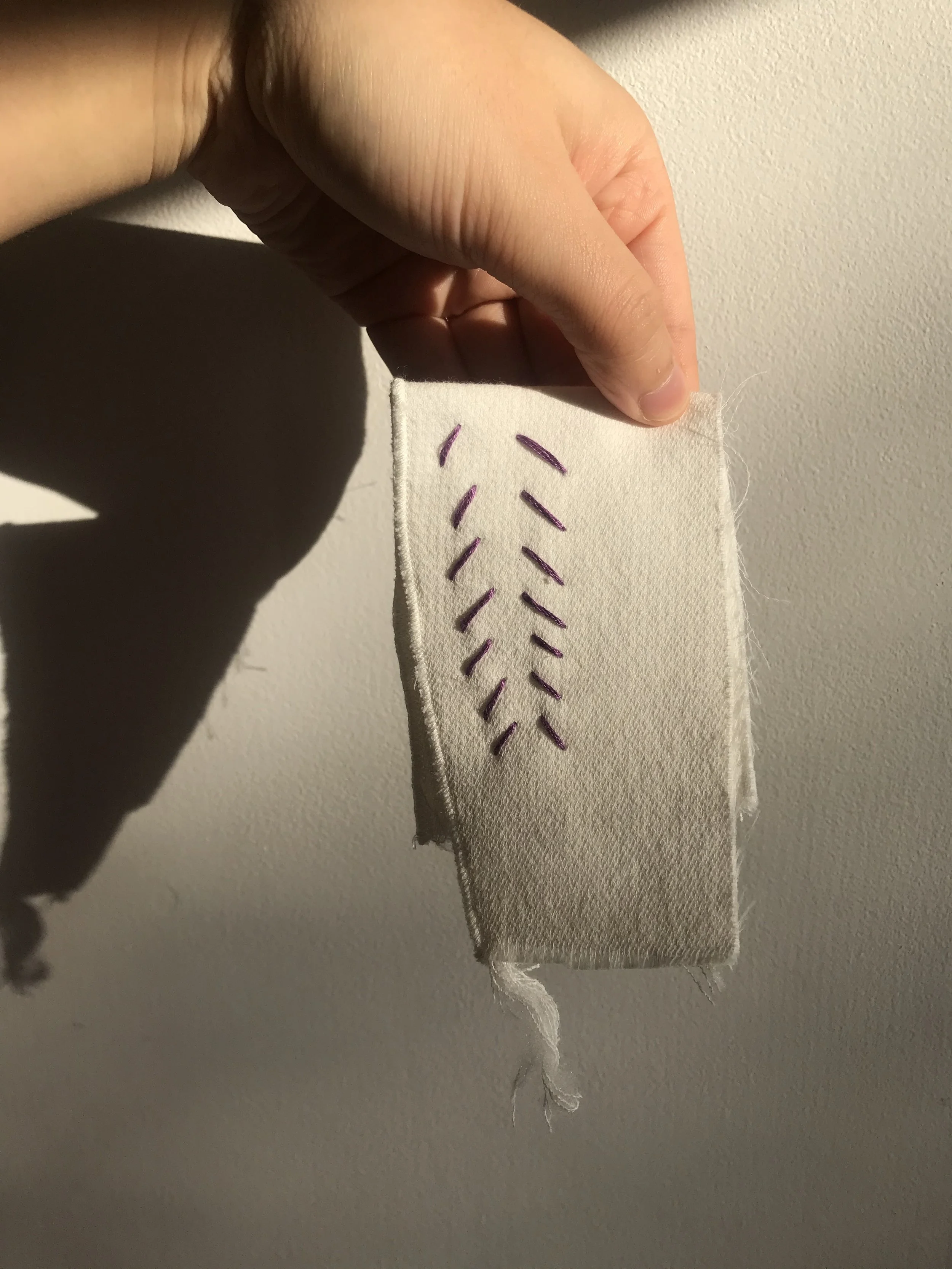
Ponjee | Pad stitch sample
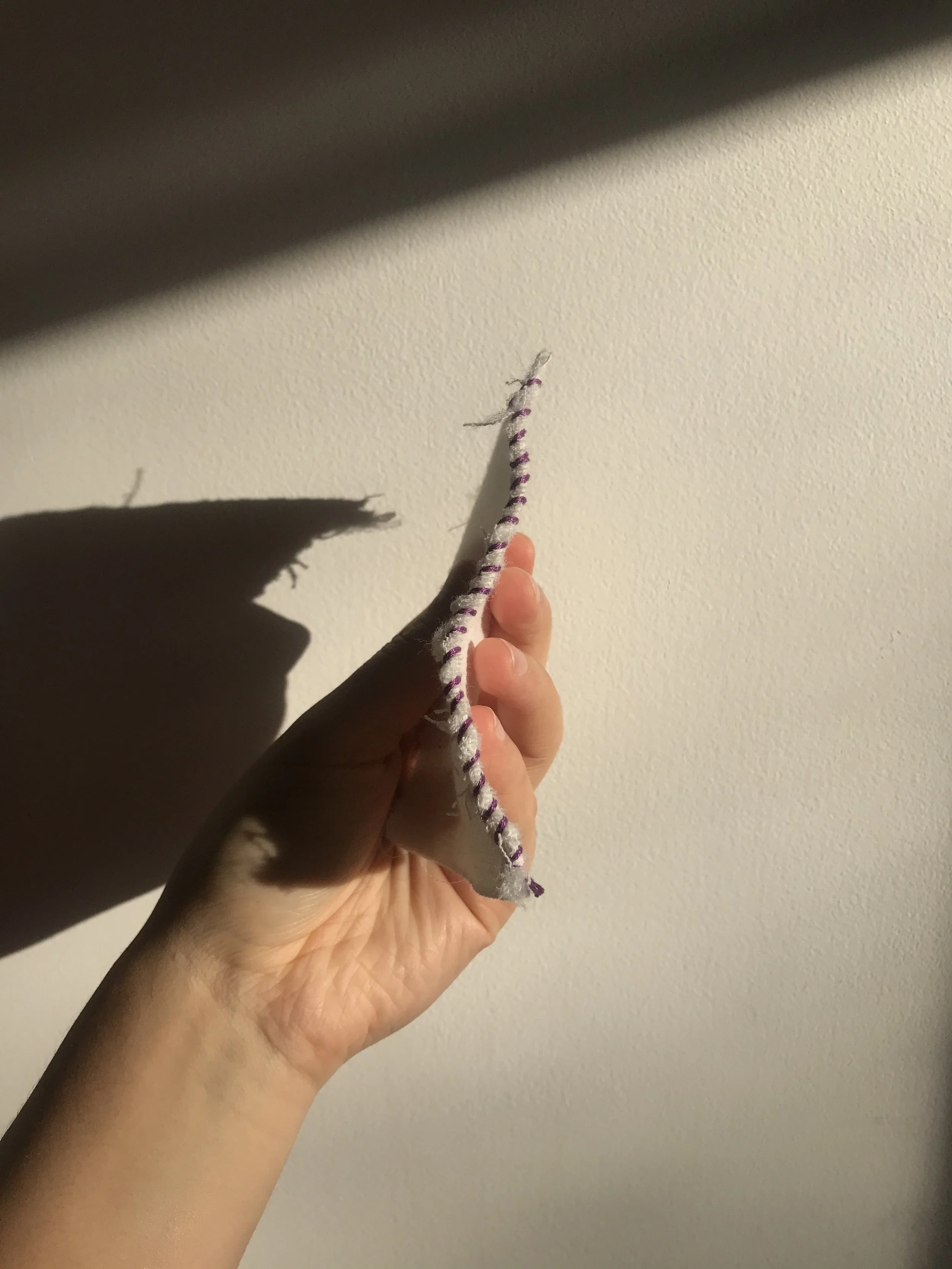
Ponjee | Running stitch sample
Viktor & Rolf
.
Viktor & Rolf .
SS 2020 collection draws on volume and texture that drapes, hugs and accentuates the body and produces new proportions to enhance the figure.
SS20 Viktor & Rolf: Horizontal gathers used to tier the volume of the dress, enhancing form and variations of volume
SS20 Viktor & Rolf: Strong shoulder puffs, hugs the sleeve and drapes diagonally over the bust - could potentially be recreated through the pleat sample
SS20 Viktor & Rolf: Exaggerated gathers and repetition of line creates waterfall effect on sleeves, encompassing the whole body - Gathering the Pongee pin-tuck sample could create an even more exaggerated effect
Marianne Brandt
.
Marianne Brandt .
German multidisciplinary artist and product designer, studied at the “Bauhaus art school in Weimar and later became head of the Bauhaus Metall-Werkstatt in Dessau in 1927” . Brandt created a series of homewares that emanate the design intention of form follows function. Where aesthetic components are of direct intention for functionality of a product. This same design intention becomes apparent in my own swatches and their “functionality” on and off the body, as they each hold a directed intention or suggested outcome.


